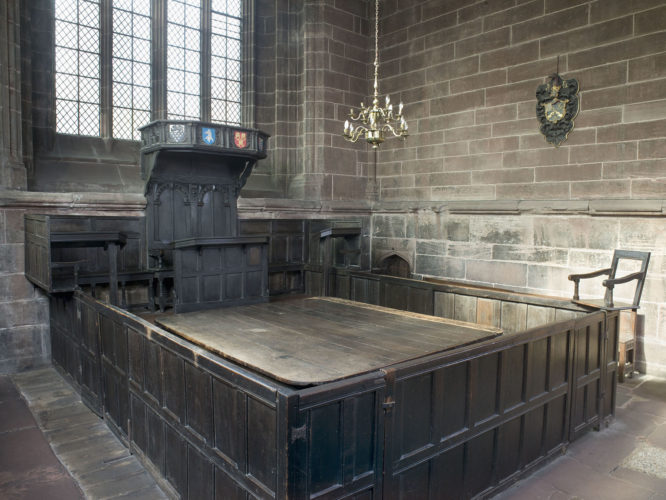This is a view of the Chester consistory court, the only surviving church-court in England from the early modern period. Ecclesiastical or consistory courts continued to administer canon law (the law of the Church of Rome) in post-Reformation England. Their jurisdiction in the sixteenth and seventeenth centuries was expansive, covering marriage, bastardy, personal property, sexual morality, spiritual matters, defamation, wills and probate, and church governance. Compared to the conspicuous publicness of the courts of common law in Westminster, church courts – as the Chester court suggests – were startlingly small and pent up. But their very closeness could, paradoxically, intensify a sense of spectacle and humiliation, as the attendees would be drawn mostly from a local community known to the defendant(s) and accuser(s), and the intimate space would hold enough members of that community for the procedure to feel acutely ‘public’ and visible. Church court trials usually proceeded on the basis of prior depositions, with a selected number of legal professionals, but within a structure of public authority. Punishment for certain sexual offences entailed ritual penance in front of the congregation, and blended the relative privacy of the legal procedure with the publicness of the outcome. The nature of the jurisdiction also put a spot-light on the challenge of the evidentiary process: presenting before the eyes of the court truths which were ultimately invisible and unverifiable - such as the private act of sex or the inward intention to marry. Because of their association with sexual litigation – one of the commonest kinds of legal action these courts saw – these ‘spiritual’ or ecclesiastical courts were, ironically, also known as ‘bawdy courts’.
Unlike common law courts, church courts allowed women to appear and sue in their own person. Along with the courts of Chancery and Requests, ecclesiastical courts were where women went to law independently of their husbands and fathers.











